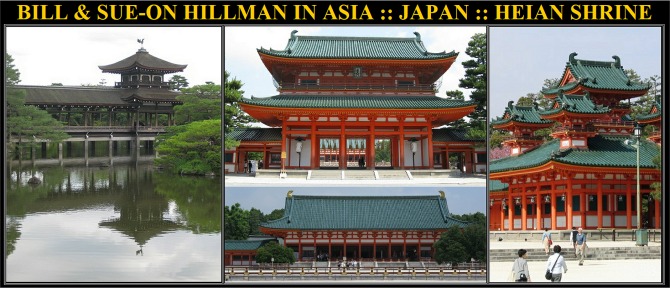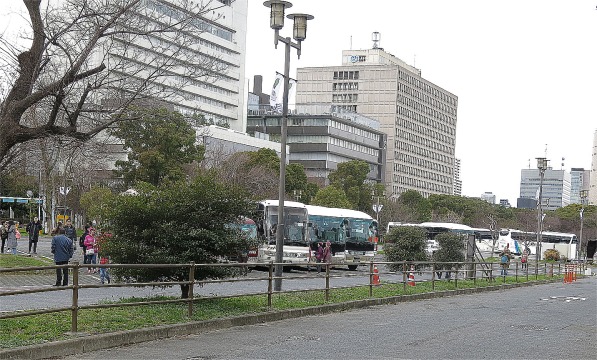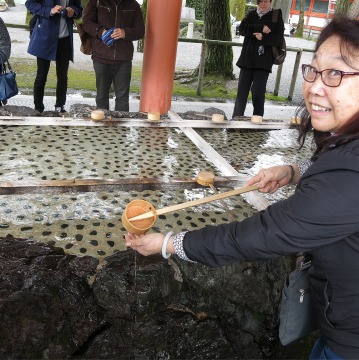The Heian Shrine is
a Shinto shrine located in Sakyo-ku, Kyoto, Japan. The Shrine is ranked
as a Beppyo Jinja (the top rank for shrines) by the Association of Shinto
Shrines. It is listed as an important cultural property of Japan.
Heian Shrine has a relatively
short history, dating back just over a hundred years to 1895. The shrine
was built on the occasion of the 1100th anniversary of the capital's foundation
in Kyoto and is dedicated to the spirits of the first and last emperors
who reigned from the city, Emperor Kammu (737-806) and Emperor Komei (1831-1867).
Heian is the former name of Kyoto.
A giant 25-meter-high torii gate
dominates the approach to the shrine, around which there are a couple of
museums. The actual shrine grounds themselves are very spacious, with a
wide open court at the center. The shrine's main buildings are a partial
replica of the original Imperial Palace from the Heian Period, built on
a somewhat smaller scale than the original.
Behind the main buildings
there is an attractive, paid garden with a variety of plants, ponds and
traditional buildings. The garden's most striking feature are its many
weeping cherry trees, which bloom a few days later than most other cherry
trees, making the garden one of the best cherry blossom spots in Kyoto
around the tail end of the season, which is usually around mid April.
Occasionally, the shrine's court
is used for special events. For instance, the shrine serves as a site of
the Jidai Festival each year on October 22, the anniversary of the foundation
of Kyoto. The festival's main event is a parade of people in costumes from
different periods of Japanese history that leads from the Kyoto Imperial
Palace to Heian Shrine. The Shrine is also used for traditional Japanese
weddings as well as concerts. It is rare for a modern concert to be held
at a historic site like the shrine, but merging modern and old culture
in Kyoto has become a trend.
Adjacent to the Shrine is Okazaki
Park, where visitors can learn about culture. The Shrine is surrounded
by the Kyoto Public Library, Kyoto Municipal Museum of Art, the National
Museum of Modern Art, Kyoto, Kyoto Kaikan, and the Kyoto Zoo.


 .
.
![]()


![]()

